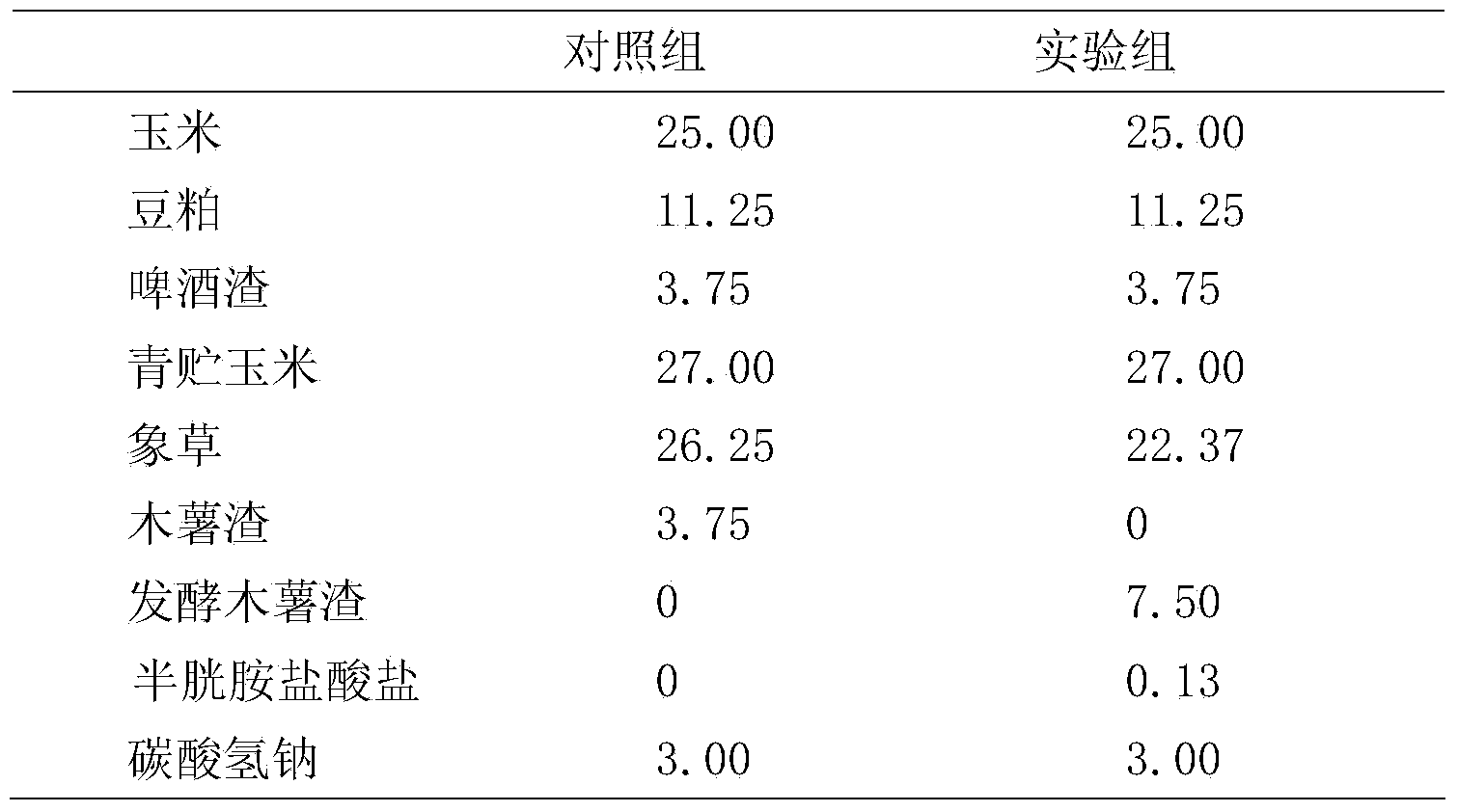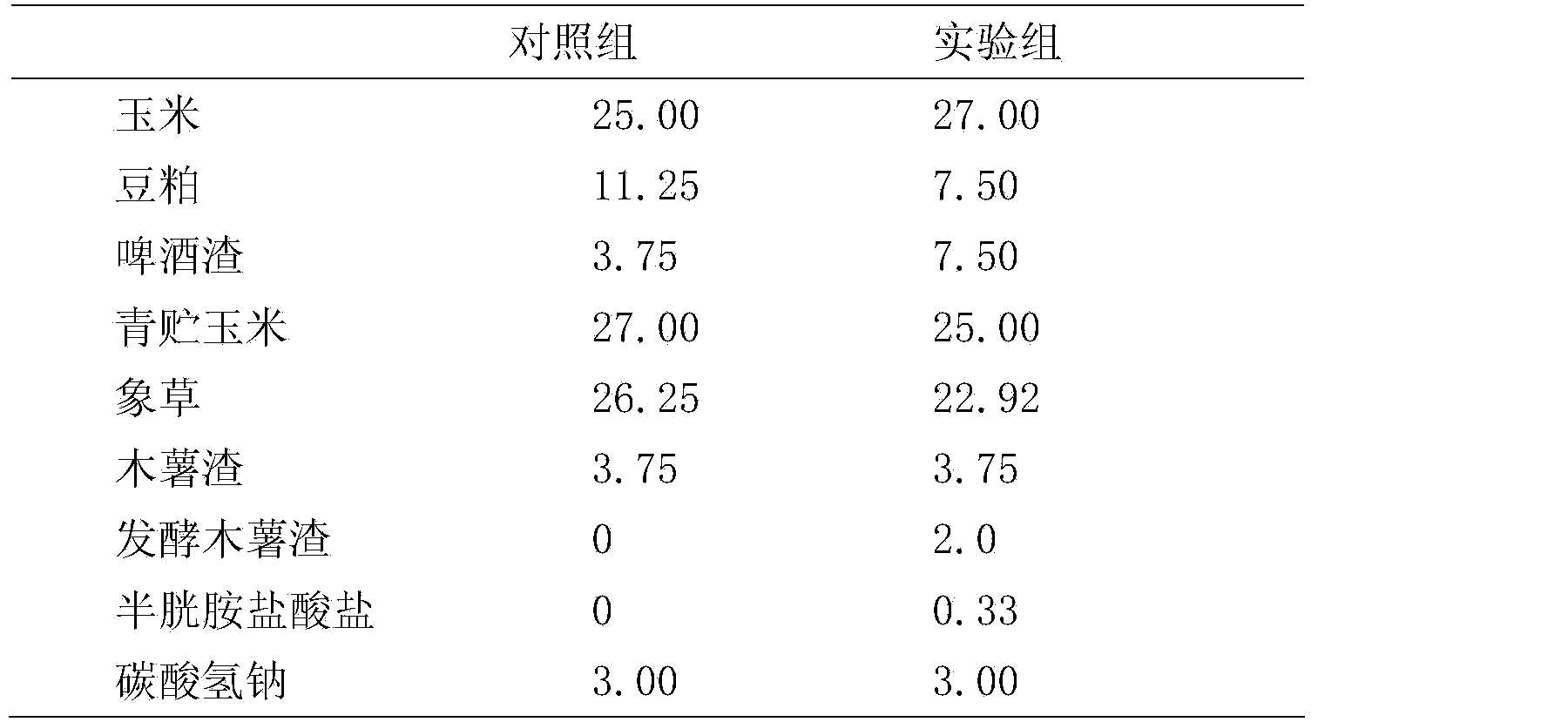Feed capable of reducing methanogenesis of gastrointestinal tracts of buffalos
A gastrointestinal, methane technology used in the field of ruminant feed formulation
- Summary
- Abstract
- Description
- Claims
- Application Information
AI Technical Summary
Problems solved by technology
Method used
Image
Examples
Embodiment 1
[0009] Apply the feed of the present invention to simulate the rumen digestion and metabolism of buffalo in vitro and apply the bottle system to simulate the rumen digestion and metabolism of buffalo in vitro. The method adopts the pressure reading type in vitro gas production system (Reading pressure system, RPT) of Mauricio et al. (1999) to carry out in vitro rumen fermentation and cultivation, The anaerobic artificial rumen buffer was prepared according to the method of Menke and Steingass et al. (1988). The substrate formulation is shown in Table 1 below.
[0010] The rumen fluid comes from three buffaloes with a body weight of about 400±5kg installed with permanent rumen fistulas as donor animals for rumen fluid. The experimental cows were fed in a tethered manner, fed twice a day at 8:00 and 17:00, had free access to water, conventional light, deworming and management.
[0011] Extract 10 μl of gas after substrate fermentation for 6 hours, 12 hours, and 24 hours. Use ma...
Embodiment 2
[0019] Apply the feed of the present invention to simulate the rumen digestion and metabolism of buffalo in vitro and apply the bottle system to simulate the rumen digestion and metabolism of buffalo in vitro. The method adopts the pressure reading type in vitro gas production system (Reading pressure system, RPT) of Mauricio et al. (1999) to carry out in vitro rumen fermentation and cultivation, The anaerobic artificial rumen buffer was prepared according to the method of Menke and Steingass et al. (1988). The substrate formulation is shown in Table 3 below.
[0020] Table 3. Feeds of the control group and the experimental group (air-dried substance basis, mass percentage) (%)
[0021]
[0022] The rumen fluid comes from three buffaloes with a body weight of about 400±5kg installed with permanent rumen fistulas as donor animals for rumen fluid. The experimental cows were fed in a tethered manner, fed twice a day at 8:00 and 17:00, had free access to water, conventional li...
PUM
 Login to View More
Login to View More Abstract
Description
Claims
Application Information
 Login to View More
Login to View More - R&D
- Intellectual Property
- Life Sciences
- Materials
- Tech Scout
- Unparalleled Data Quality
- Higher Quality Content
- 60% Fewer Hallucinations
Browse by: Latest US Patents, China's latest patents, Technical Efficacy Thesaurus, Application Domain, Technology Topic, Popular Technical Reports.
© 2025 PatSnap. All rights reserved.Legal|Privacy policy|Modern Slavery Act Transparency Statement|Sitemap|About US| Contact US: help@patsnap.com



